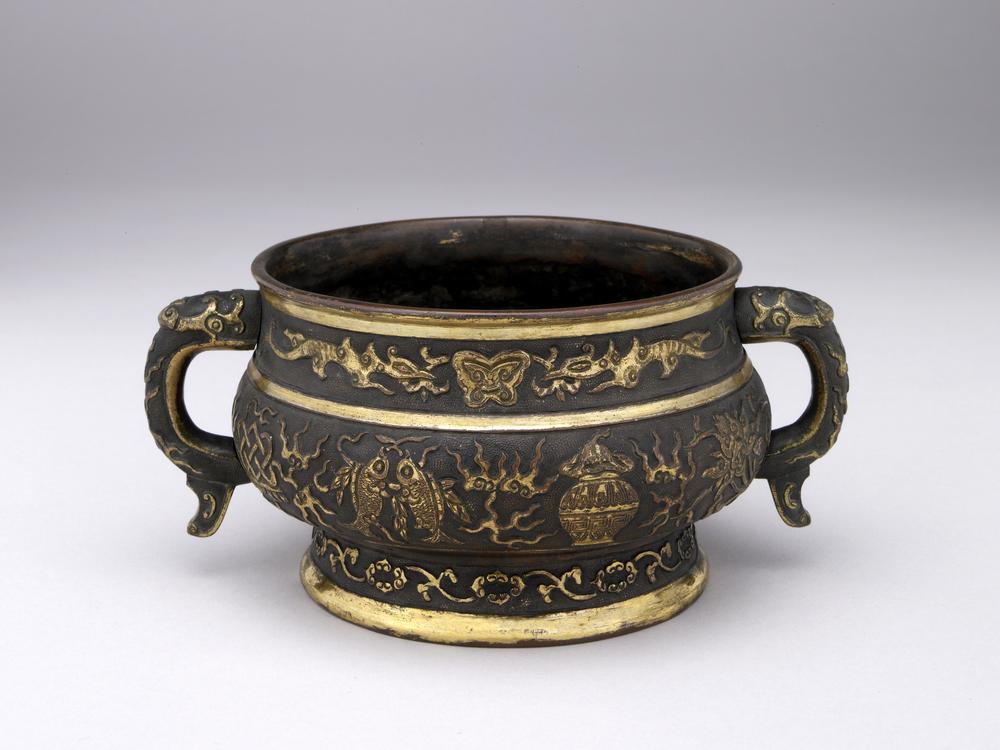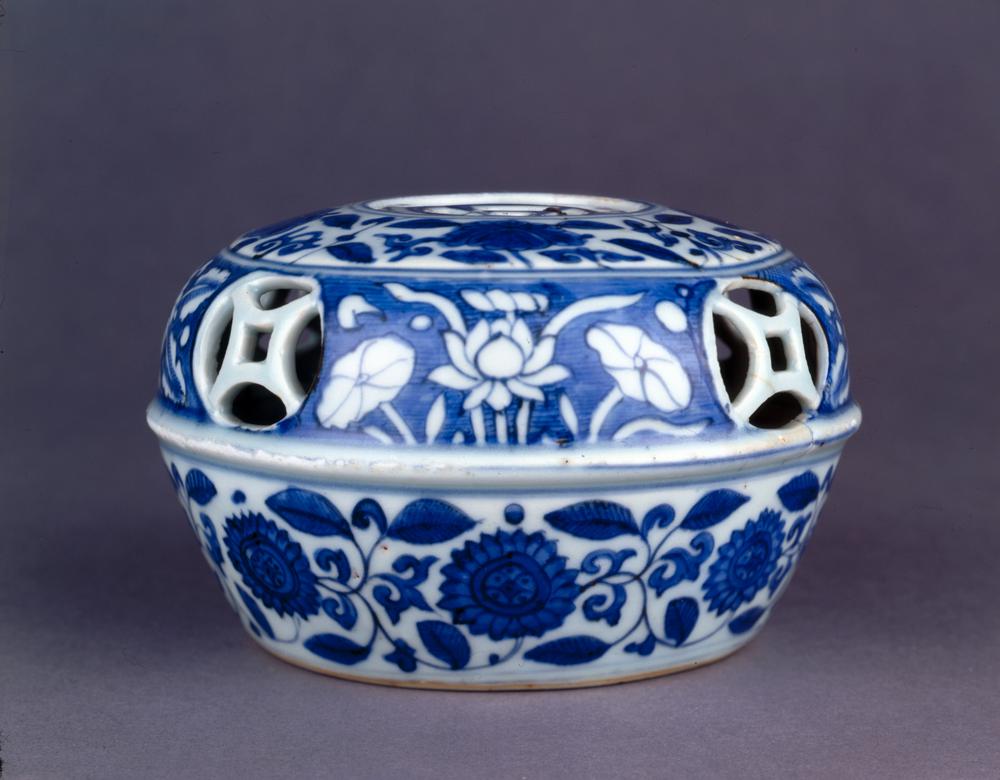Period:Tang dynasty Production date:801-850 (circa)
Materials:silk, 絲綢 (Chinese),
Technique:painted
Subjects:bodhisattva lotus 菩薩 (Chinese) 蓮花 (Chinese)
Dimensions:Height: 51 centimetres Width: 14 centimetres
Description:
Painted banner showing a bodhisattva standing on a lotus, holding a lotus flower in the left hand. His tiara is three-pronged, and he wears a striped, tightly-wrapped dhoti with flowered scarves of red and blue. One of a series of ten banners (see 1919,0101,0.101 and 103). Ink and colour on silk.
IMG
![图片[1]-banner; painting; 幡(Chinese); 繪畫(Chinese) BM-1919-0101-0.102-China Archive](https://chinaarchive.net/Tang dynasty/Paintings/mid_00014551_001.jpg)
Comments:EnglishFrom Whitfield 1982:This Bodhisattva follows the same canon of proportions as the one just discussed, tall and slender but with a slightly thick-set appearance nonetheless because of the lack of articulation, and wearing the same closely wrapped dhoti and flowered stole. The most noticeable Central Asian feature is the shape of the face, which like another figure from Qizil described by Mario Bussagli, obeys “the Indian principles of foreshortening laid down in the handbooks on wall painting, in particular in the principle of ksayavrddhi, or ‘increase and decrease’. The face of the figure is turned to the left; the receding parts of the face are contracted, the more visible parts enlarged, the former obeying the law of ksaya, the latter that of vrddhi. The two parts [are] divided by a line passing through the ridge of the nose and the tip of the chin (these being salient features and therefore highlighted).” (Bussagli, 1963,p. 32.) The same principle can be seen at work in the main Bodhisattvas attendant upon Bhaisajyaguru in Pl.16-2, which is dated A.D. 836. ChineseFrom Whitfield 1982:此菩薩像描繪的與上圖菩薩像比例相同,仍然沒有顯示膝關節,緊緊纏著腰布,著花紋樣的天衣。身體細高,格調稍顯稠密。臉部表現極具顯著的中亞特徵。Mario Bussagli以下講述有關克孜爾出土像时所指出的恰與之符合:“以壁畫作模本,可辨認出是以增減法則做基礎的印度式透視法。此像轉向左方的臉部,向外的一面大,而向裏的一側則繪的狹小,遵從了前者是‘增’後者是‘減’的法則。這兩個部分被鼻梁和下顎尖的連接線隔開,爲了更加明顯使用了高光”(參照Painting of Central Asia p.32)。依照與此相似規則的繪畫,還有紀年爲836年的圖16的藥師脅侍菩薩(參照圖16-2)。
Materials:silk, 絲綢 (Chinese),
Technique:painted
Subjects:bodhisattva lotus 菩薩 (Chinese) 蓮花 (Chinese)
Dimensions:Height: 51 centimetres Width: 14 centimetres
Description:
Painted banner showing a bodhisattva standing on a lotus, holding a lotus flower in the left hand. His tiara is three-pronged, and he wears a striped, tightly-wrapped dhoti with flowered scarves of red and blue. One of a series of ten banners (see 1919,0101,0.101 and 103). Ink and colour on silk.
IMG
![图片[1]-banner; painting; 幡(Chinese); 繪畫(Chinese) BM-1919-0101-0.102-China Archive](https://chinaarchive.net/Tang dynasty/Paintings/mid_00014551_001.jpg)
Comments:EnglishFrom Whitfield 1982:This Bodhisattva follows the same canon of proportions as the one just discussed, tall and slender but with a slightly thick-set appearance nonetheless because of the lack of articulation, and wearing the same closely wrapped dhoti and flowered stole. The most noticeable Central Asian feature is the shape of the face, which like another figure from Qizil described by Mario Bussagli, obeys “the Indian principles of foreshortening laid down in the handbooks on wall painting, in particular in the principle of ksayavrddhi, or ‘increase and decrease’. The face of the figure is turned to the left; the receding parts of the face are contracted, the more visible parts enlarged, the former obeying the law of ksaya, the latter that of vrddhi. The two parts [are] divided by a line passing through the ridge of the nose and the tip of the chin (these being salient features and therefore highlighted).” (Bussagli, 1963,p. 32.) The same principle can be seen at work in the main Bodhisattvas attendant upon Bhaisajyaguru in Pl.16-2, which is dated A.D. 836. ChineseFrom Whitfield 1982:此菩薩像描繪的與上圖菩薩像比例相同,仍然沒有顯示膝關節,緊緊纏著腰布,著花紋樣的天衣。身體細高,格調稍顯稠密。臉部表現極具顯著的中亞特徵。Mario Bussagli以下講述有關克孜爾出土像时所指出的恰與之符合:“以壁畫作模本,可辨認出是以增減法則做基礎的印度式透視法。此像轉向左方的臉部,向外的一面大,而向裏的一側則繪的狹小,遵從了前者是‘增’後者是‘減’的法則。這兩個部分被鼻梁和下顎尖的連接線隔開,爲了更加明顯使用了高光”(參照Painting of Central Asia p.32)。依照與此相似規則的繪畫,還有紀年爲836年的圖16的藥師脅侍菩薩(參照圖16-2)。
© Copyright
The copyright of the article belongs to the author, please keep the original link for reprinting.
THE END
![[Qing Dynasty] British female painter—Elizabeth Keith, using woodblock prints to record China from the late Qing Dynasty to the early Republic of China—1915-China Archive](https://chinaarchive.net/wp-content/uploads/2022/11/image-191x300.png)




